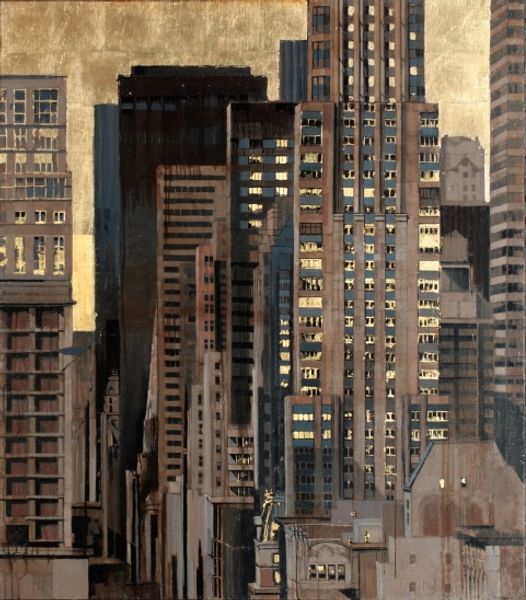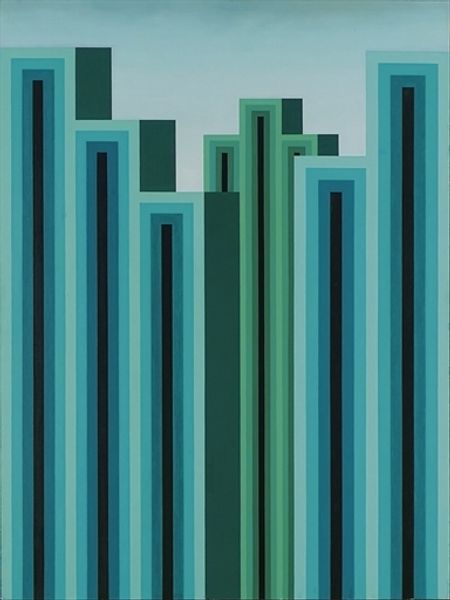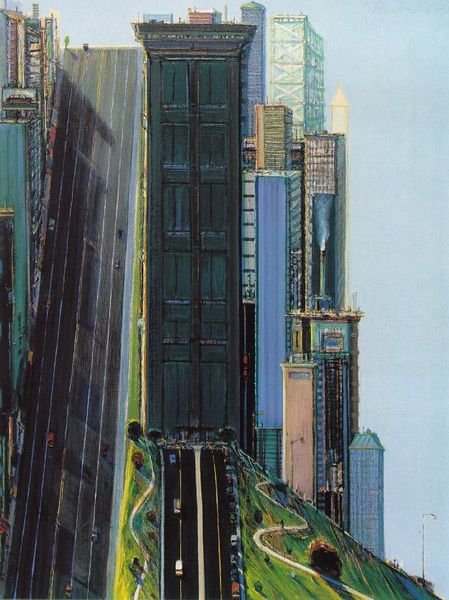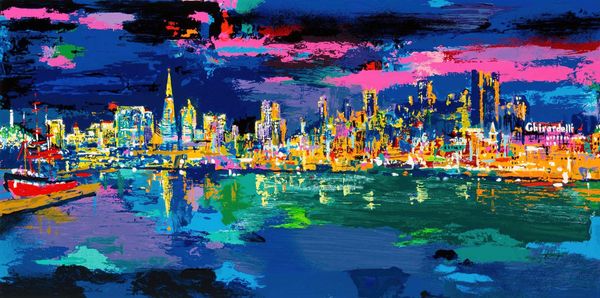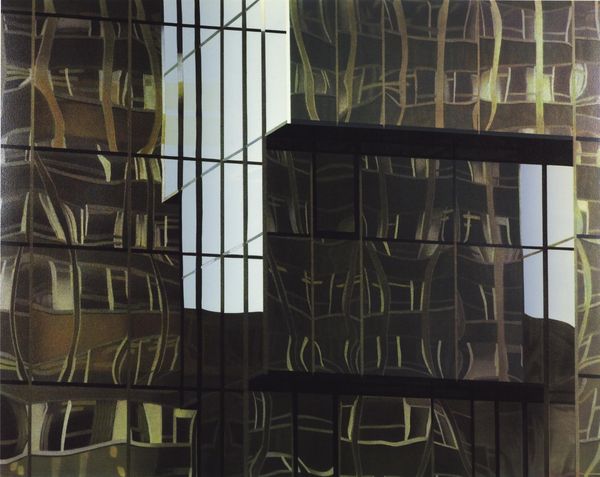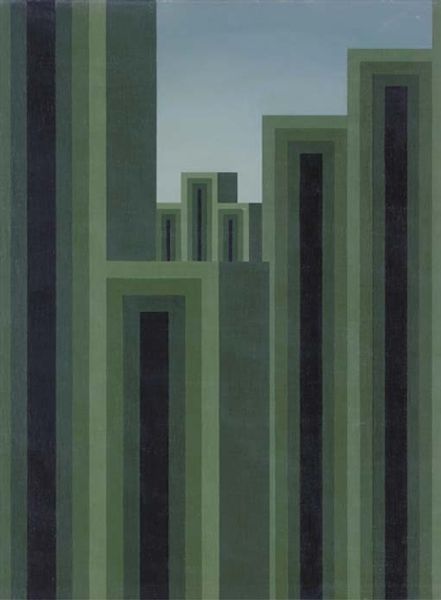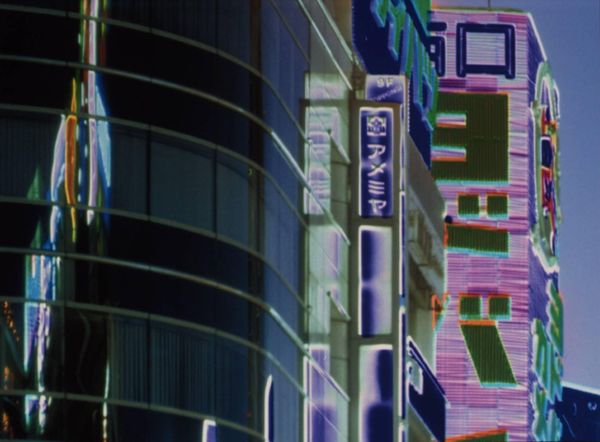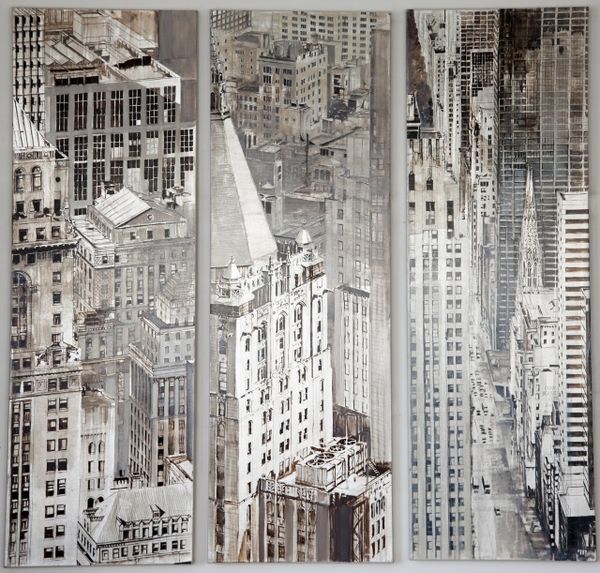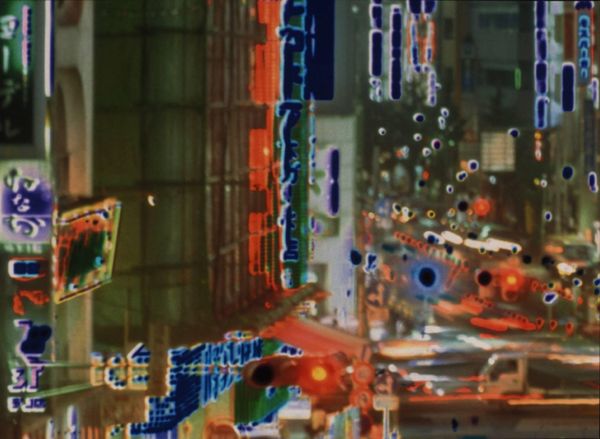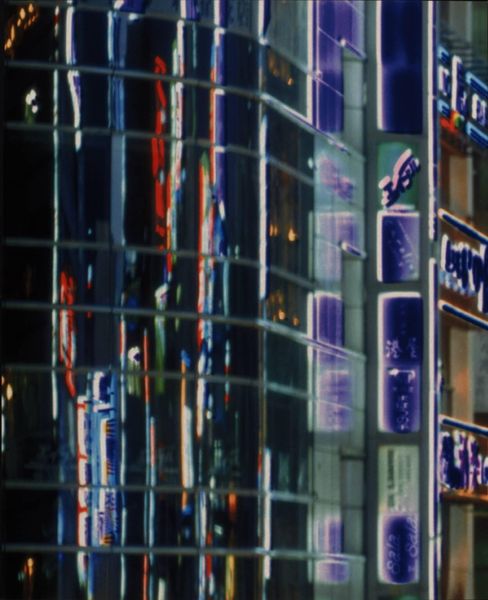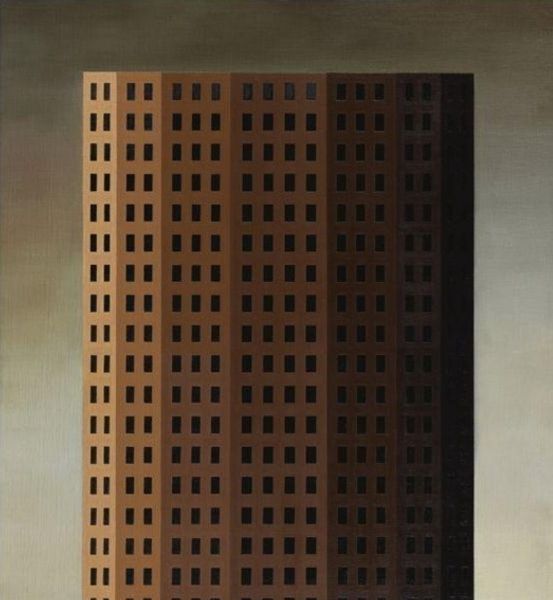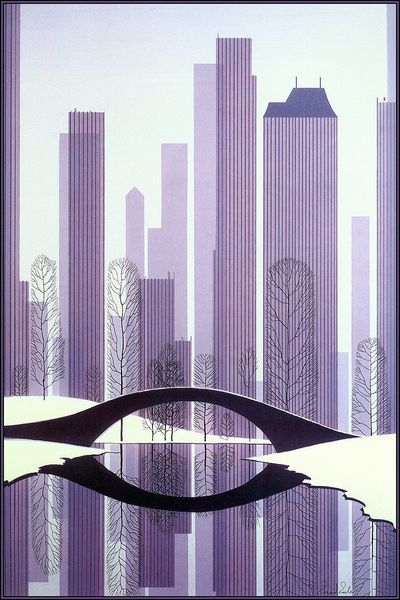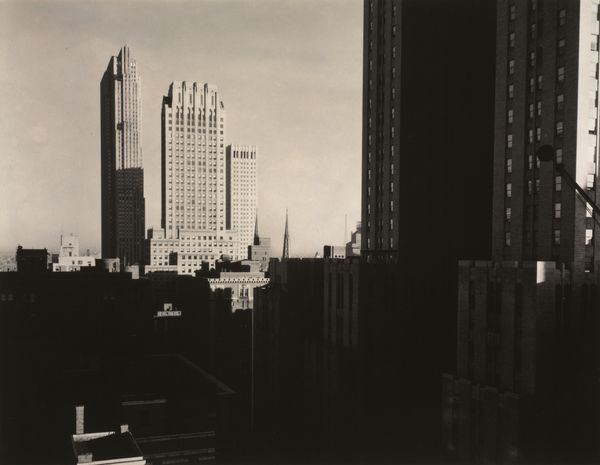
painting
#
painting
#
landscape
#
river
#
reflection
#
geometric
#
abstraction
#
water
#
line
#
cityscape
Copyright: Eyvind Earle,Fair Use
Editor: This painting is "East River" by Eyvind Earle. What I find striking is how the artist uses line and color to create a simplified, almost flattened cityscape. It feels both modern and a little bit like a memory. What catches your eye? Curator: The immediate aspect of this work that commands attention is its formal composition. Note how the artist establishes a strong verticality, effectively segmenting the pictorial space. This is further reinforced by a palette primarily composed of blues and purples, hues which lend the painting a somber and contemplative air. Editor: Contemplative, yes, that’s a good word. It's quite different from many cityscape paintings I’ve seen, which often try to capture the energy of the city. This is quite still. Is that stillness important? Curator: Precisely. The stillness invites us to consider the structural elements devoid of external narratives. The simplified forms of the buildings, reduced to geometric shapes, serve to emphasize the underlying structure. Consider the strategic use of lines – how they define form, create depth, and dictate the visual rhythm. Editor: The reflection in the water seems very important to that rhythm. Curator: Indeed. Note how the reflection is not merely a duplication of the cityscape above, but rather a distortion and fragmentation, adding another layer to the formal complexity of the piece. It unsettles any sense of a simple mirroring, forcing us to reconcile the actual and the perceived. The linear treatment of the sky, reflecting into the water, mirrors and abstracts, which draws the eye up and then down, creating an enclosure of the forms. Editor: So you are saying it is less about what it depicts, but more about how it depicts it? Curator: Precisely. While the subject matter may be identifiable as a cityscape, its true essence lies in the orchestration of visual elements—line, color, form, and their inherent relationships. The artist invites us to decode these components to appreciate the artwork on a purely aesthetic and structural plane. Editor: That’s helped me to really see it differently. I will definitely look at art with more attention to formal elements going forward.
Comments
No comments
Be the first to comment and join the conversation on the ultimate creative platform.
